The dream of supersonic travel to Hawaii just soared somewhat closer to reality as Boom’s XB-1 announced it has wrapped up its test program with a second successful supersonic flight. With its groundbreaking “Boomless Cruise” technology, Boom Supersonic aims to revolutionize air travel, including to Hawaii—but not everyone is convinced this vision will take off.
Boom’s ambitious plans have drawn strong opinions from aviation enthusiasts, skeptical industry veterans, and Hawaii travelers. Some see this as a game-changer, while others doubt it will ever take off. With Overture now in development, the real question is whether Hawaii will see supersonic flights or if this is another Concorde-style dream.
Supersonic flight advances.
Boom’s final test flight, its second supersonic flight, took place on February 10, 2025. XB-1 hit Mach 1.18 at 36,514 feet, successfully demonstrating key supersonic capabilities. The flight gathered critical data on aerodynamics, acoustic impacts, and the ability to achieve supersonic speeds without generating the dreaded audible sonic boom on the ground.
With these tests complete, Boom is shifting focus to Overture, the aircraft designed to bring commercial supersonic travel back to the skies.
Some travelers already imagine the possibilities, with one reader saying they would “sign up for supersonic Hawaii-to-Paris in six hours.” Others remain skeptical, questioning whether shaving two hours off a flight from San Francisco to Honolulu is worth the cost.


Boomless Cruise: a game changer?
Boomless Cruise redirects the sonic boom upward into the atmosphere, preventing it from reaching the ground. This innovation could allow Overture to achieve supersonic speeds over the U.S. without the noise disruptions that grounded past overland flights. For Hawaii, this could extend beyond typical West Coast routes. Boom claims it can cut travel times from the U.S. West Coast to just three hours—if regulatory and logistical hurdles can be overcome.
A former Concorde ground school attendee dismissed the idea entirely, calling XB-1 “a vanity project” and predicting it “will never make scheduled flights to Hawaii in our lifetime.” Not everyone is ready to rule it out. Some see a strong opportunity here. “If you can get from Oakland to Honolulu gate to gate in two and a half hours, I will be in love with Boom,” wrote another traveler.
From test jet to airliner: the real challenge.
Making the jump from their single-pilot test jet to a commercial airliner remains a massive challenge. Commenters pointed out that XB-1 at just 68 feet long is a fraction of the size and complexity of the planned commercial aircraft. Jon questioned whether Boom could scale up successfully, saying, “Scaling from a single-seat demonstrator to a passenger jet is an entirely different engineering challenge. They’re not even close to proving that part yet.” Others echoed concerns about the leap in engine requirements, manufacturing, and certification. DICKIE_D dismissed the XB-1 as “a publicity stunt,” adding, “Show me a full-size prototype, and then we’ll talk.”
The regulatory hurdles ahead.
While Boom’s technology is promising, FAA regulations remain a significant barrier. Current U.S. aviation law prohibits all supersonic flight over land, regardless of noise impact. Government regulators, often cautious about tourism-related advancements, may resist such a significant change. However, some believe Hawaii’s unique geography makes it an ideal candidate for supersonic travel, even under current rules.
Some readers think Hawaii state officials would try to stop Boom. One commenter argued, “The backwards Hawaii government will never allow Boom. They’d rather force tourists to arrive by outrigger than approve a technological step forward.”
Others believe a policy shift is possible. An aviation enthusiast pointed out, “Hawaii is being used as an example because once you are feet wet off the west coast, you can punch through the number and not worry about sonic boom fines.”
FAA regulations, not Hawaii lawmakers, will ultimately determine if Boom can proceed. Regardless, Hawaii remains one of the few viable U.S. destinations where supersonic travel is possible even under current rules.
Who will fly supersonic to Hawaii?
Even if Boom overcomes regulatory challenges, the question remains about who will pay the price for supersonic travel. Many doubt the average traveler will afford it.
“Another giveaway to the ultra-wealthy,” one commenter wrote. “Rich people don’t care that a ticket will cost upwards of $5,000… If they did, they’d just fly first class on a regular jet with the rest of us.”
Others see the value in speed. A longtime Hawaii traveler pointed out that “we fly first class 97% of the time anyway. If costs are about the same, we’d definitely fly the SST.”
Industry experts also raise concerns about commercial viability. One reader questioned the financial model, asking, “Would you rather get there four hours faster in a cramped aircraft or pay for a more spacious first-class experience? Comfort over speed every time.”
Boom’s vision, whether realistic or not, aligns with Hawaii’s evolving tourism model, where fewer visitors are expected to spend more per trip. If airlines see demand from high-spending travelers willing to pay a premium for speed, supersonic flights to Hawaii could become part of this shift.
Overture’s timeline and what’s next.
With XB-1’s test program complete, Boom is moving full speed ahead with Overture. The company expects its supersonic airliner to roll out by the early 2030s, with test flights targeted before commercial service begins. More precise dates haven’t been provided.
Boom claims Overture will run on 100% sustainable aviation fuel and be far more efficient than Concorde. However, skepticism remains about whether the necessary engines will even exist. One critic dismissed the project outright, saying, “The airplane will never exist, not least of which is because its engine will never exist. The project is a scam.”
Despite these doubts, airline interest continues. United Airlines has ordered 15 Overture aircraft, and Japan Airlines has invested in Boom’s development. Whether those planes will serve Hawaii remains unknown.
We invite your comments. Mahalo!
Get Breaking Hawaii Travel News
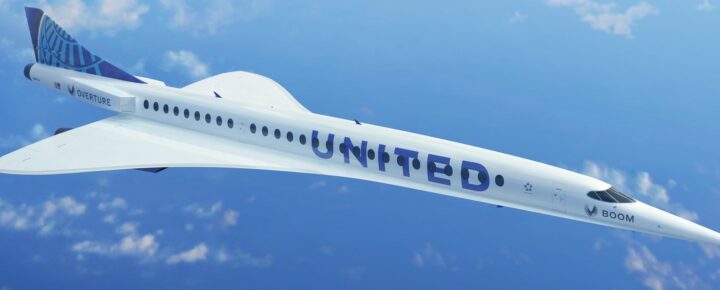
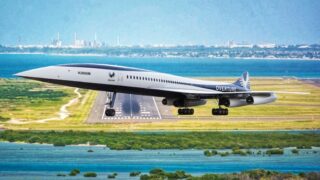
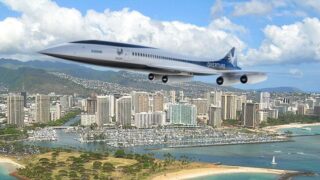
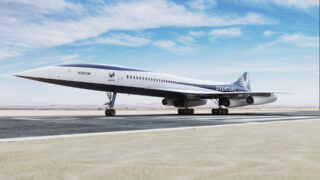
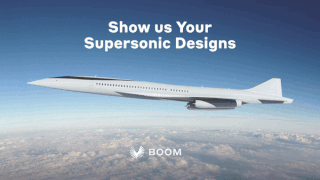
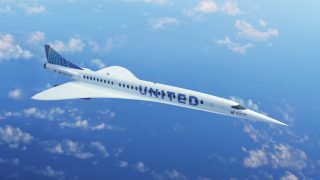
DICKIE_D. I love the 747 too but you cannot condemn Boom before they have built the first Overture. I remember Boeing had teething troubles with the 100 series.
The key issue is that the only flights to Hawaii with 747 equipment are occasional Korean Air pax flights plus the strong showing in cargo. Delta and United pulled their pax 747’s years ago and the West Coast has many many horrid narrow body flights instead with the occasional aged 777-200 high density from United and aged 767-300s from Delta. Hawaiian are running the cramped Dreamliner on some flights but Alaska may move them elsewhere soon, leaving the aged a330’s.
So 747 8i or Boom Overture would depend on the final offering. I fly to HNL from LHR so I would probably choose Boom LHR – HNL and 747 8i for HNL – LHR (both with refuel stops of course).
My comment wasn’t intended to pine away for the now “flown west” glory days of the B-747 and had nothing to do w/ DAL, UAL, HAL, but rather to show “no real gain” time advantage for the up-charge that will be incurred when (???) and if (???) the Boom Overture toy-Concorde mock-up ever becomes a “real” airplane and enters HNL revenue flying … which I seriously doubt.
BTDT with the Concorde at a former airline – it didn’t work – and learned a lot of lessons working with Flt Ops, Boeing, the FAA, and foreign gov’ts in addition to flying the line and instructing at two airlines. Concorde (for example) didn’t “fly” for a variety of reasons all coming down to $$$ – and it was a multi-government big $$$$ supported project, which this vanity project ain’t. Once the gov’t. and “interest groups” get their greasy, regulatory fingers into the mix – forget about it.
Dreamin’ is a nice diversion, but hard reality always wins out.
I’d fly my late, great, now retired 18-Wheeler (B-747 has 18 wheels) at .86M on a crossing …
Boom’s toy boat (O.K. – experimental “airplane”) final test flight and “2nd supersonic flight on 02/10/25 hit 1.18M at 36K’, successfully demonstrating key supersonic capabilities”. Hey, haven’t we been doing that since the beginning of the jet age?
The difference in flight time between our ol’ B-747 flying from a West Coast departure point to the “Territory of Hawai’i” is only a little over 1 (one) hour + change.
Is that really worth the “up-charge” that you’ll have to pay to say “I flew on the new, toy Concorde mock-up” ?? Assuming the thing ever enters revenue airline service … ?? Which I doubt … I’m taking bets, btw.
It will be extremely fortunate if it Ever shows up because a single seat jet with little or none of the components that would even be on a full scale version means fundamentally nothing! Did Boeing make a mini 747 and fly it before making the full size jet!? Personally I expect to see this idea show up sometime around the 12th of Never!
I think it’s a great idea, I won’t use it but somebody might. Hawaii needs the big spenders. Not the Spirit airline, VRBO crowd.
Personally, I think this “Boom” idea is a ‘pie in the sky and ice cream too’ kind of project. Supersonic aircraft are WAY more expensive to maintain than conventional jet aircraft. When Pan Am was flying the big Boeing 314 flying boats across the Pacific, the only people who flew on them were the affluent and certain gov’t pax. You and I couldn’t afford it even then. Never Happen!
So, even if they can actually build a full-sized airliner (so far they have just flown a small aircraft), It will have virtually little to no impact on the every day person as far as cost of flying to HI. The Concord, backed by Britain and France, couldn’t sustain it, how is a small company like like Boom going to??? In your late night dreams.
P.S. The late TWA flight that I waited for ended up diverted to Gander, Newfoundland due to an unfounded bomb threat 😞😠
For those saying it’s too expensive, think about the people who already pay for first class and even private jets. Boom isn’t for everyone, but it doesn’t have to be. Hawaii’s shifting toward high-spending tourism anyway and this might just be a fit. Weirder things have happened.
As someone who flies to Hawaii every year, I’d happily pay more to spend less time in the air. Long flights are exhausting, and this could be a game-changer if the price isn’t totally ridiculous.
Hawaii’s government barely wants tourists now. Do you really think they’ll let a supersonic jet bringing in high-spending visitors arrive? Well maybe, actually they would like that. In any event, I wouldn’t hold my breath.
I think the current HI government would be fine with this as long as they could level an extra special and very costly “rich supersonic visitor tax” that could fund government pay increases.
This could be the future, or it could be another Concorde situation—super cool but never really practical. I hope Boom figures out a way to make this work for more than just the elite.
I love the idea of getting to Hawaii in half the time, but if it’s only for the ultra-rich as it appears, what does that mean for the rest of us? Sounds like just another way to make travel even more exclusive.
This is fascinating stuff, but I have serious doubts about whether Boom can actually scale from a tiny test jet to a full-blown airliner. We’ve heard big promises before—let’s see some real results.
I was in grammar school in the 60s when the first SSTs were test flying over the mainland. Some people were making a big deal complaining, but not my parents (or even teachers).
I was in London awaiting my late TWA flight back when the opportunity arose to take the Concorde back for an extra fee. My coworker didn’t want to so I passed. Turned out to be my last chance to do it.
I am a strong supporter of innovation, and, while not “wealthy,” I would try the new SST at least once.
Good article 👍
Boomless cruise is all fine and dandy, but unfortunately the truth of the matter is the transonic range of boomless cruise is also highly fuel thirsty negate its much of the benefit. Unless Boom has some miraculous aerodynamics in place to address this, there really will not be much benefit to cruising in the realm much below MACH 1.2-1.3. Fortunately, the Overture will transcend the transonic range thus increasing its viability, and perhaps be able to benefit by maintaining a higher speed boom free descent overland prior to landing thus upping its overall flexibility as a second-generation SST.
I think the Boom guys will have a workable plane and get it certified. The range will be far too short for HNL to CDG, I doubt it will work for HND -HNL. The two problems I see are: a) the bearded eco warriors from the mainland who protest about everything and b) the traveling public paying the prices needed.